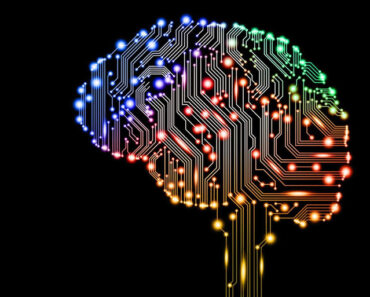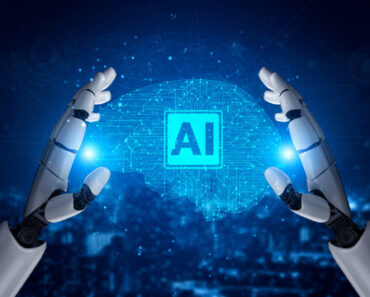Machine learning has probably the most mixed definitions and interpretations in the world. What arrived as a buzzword a few years ago continues to baffle a lot of people thanks to the way it’s been portrayed and presented.
If you look at pop culture, machine learning – coupled with Artificial Intelligence (AI) – is always shown as an agent of doom. They are projected as entities created by mad scientists, trying to take over the world to show their dominance and superiority. Even some of the classic movies like 2001: A Space Odyssey showed AI as the reason for how the movie eventually unfolds.
If you look up the internet, on the other hand, you will find tons of marketing pieces and sponsored posts that will sort of give you an idea of what machine learning is but again move on to promoting their products or services.
We felt there was a void that needed to be filled and this post exactly stems from the same reason. This is an educational piece on what machine learning is so at the end, you have a basic understanding of what the concept is and how it works. This will ensure you have the right knowledge you need to decide if you need machine learning modules for your next business idea and have conversations with companies or investors you’re trying to reach out to.
What Is Machine Learning?
Without getting into jargon and definitions, let’s understand that machine learning is all about making machines learn processes to let them autonomously perform tasks and actions. This is done through artificial intelligence, so machines develop systems in them that will let them mimic humans and take decisions and actions by themselves.
For machine learning to be accurate, systems have to be fed massive volumes of data. Consider machine learning similar to an infant, who is learning what an orange is for the first time. You show them images after images on what an orange is (and what isn’t as well) until they learn to differentiate and precisely identify autonomously. Machine learning involves the same process but on a whole different volume, scale and stake.
Today, machine learning is everywhere. If your search engine completed your search query it’s due to machine learning and predictive analytics. From your navigational systems in your phone to Netflix recommending what to watch next, there’s machine learning in everything you touch.
Why Is It Required?
Now, concepts like machine learning and artificial intelligence aren’t new. They’ve been under discussion and development since the 1950s. However, they’ve been practically feasible only since the last decade – after the data boom.
When we cracked the concept of Big Data and uncovered new ways to store and process large amounts of AI training data and machine learning automatically became practically more achievable.
Thanks to this, we can now accomplish more than we actually could with machines by our side. Over decades, we’ve been doing tons of work manually and that was time-consuming. Today, we let the machines take care of complex processes that require intricate calculations, estimations and predictions, leaving the inference and optimization parts to humans.
This has been the reason for some drastic changes and innovations in the last few years. In short, we need machine learning to further push our capabilities as humans and explore uncharted areas in diverse fields.
One crucial example is the development of a vaccine for Covid-19. Thanks to AI and its applications in clinical trials, drug research and simulations, we were able to crack the code within months and make way for mass production and distribution.
How Do We Get Machines To Learn?
Though machine learning sounds fancy and ambitious, it’s complex. Imagine getting a machine made up of a few circuits, a board, a chip and a couple of sensors to learn something and accomplish crucial tasks. But that’s where it gets interesting as well.
Algorithms are the fulcrum of machine learning models. In simple terms, they are conditions or instructions that clearly define, solve or perform a specific computation. With this understanding, let’s further understand that machines can be made to learn using three distinct concepts:
Supervised learning – where you train a system with tons of AI Training Data to help it recognize or learn something. For instance, showing a module thousands of images of dogs to make it understand what a dog is.
– Unsupervised learning – where models develop algorithms of their own to process data and learn autonomously through clustering or regression techniques. For instance, you could throw in datasets of both dogs and cats and machines would differentiate the two.
– Reinforcement learning – where rewards and penalties are assigned for arriving at right and wrong solutions respectively. This optimizes machines for better performance with every computation.
Apart from these, there are advanced concepts like neural networks – part of deep learning – where models mimic the working of a brain to mimic humans. Let’s not go there now.
Challenges and Limitations of Machine Learning
The efficiency of machine learning models completely depends on how they are trained and for this, they need tons of AI training data. This by itself is a big challenge considering there wouldn’t be much relevant and contextual datasets available across all market segments, industries, and demographics to train a specific AI model to serve a distinct purpose.
Even if the challenge of the volume of right datasets is tackled, the next struggle is eliminating any inherent bias that could have automatically crept in either among datasets or algorithms. Bias skews results and could cause machine learning models to fail big time.
The initial success of models after feeding a minimal volume of datasets is never a celebratory moment as real tests for machines arrive only when large volumes of AI Training data are fed. For companies that are awaiting funding or entering new market segments, this will always be a struggle they need to find effective solutions for.
Wrapping Up
Despite these challenges, businesses around the world come up with interesting and creative ways to generate datasets and optimize their machine learning models for precision and accuracy.
Otherwise, we wouldn’t have some of the most revolutionary products and services available in the market today.
And as science reveals, we are only scratching the surface of what we call Narrow AI. If we could do so much at this point, let’s only imagine the possibilities when we crack the code for Artificial Super Intelligence.











